#rpg mechanics overview
Explore tagged Tumblr posts
Text
Palladium Books: Are dated gameplay mechanics holding these games back?
Are Palladium Books' game mechanics stuck in the past? ⏳ In this video, we explore the debate on whether these classic RPG rules need a modern update. Join the conversation and see if it's time for Palladium Books to evolve with the times. Click to watch and weigh in! #PalladiumBooks #RPGDebate #TabletopRPG #TTRPG #RPGCommunity
Beyond the Supernatural 2E – PDF Dead Reign – [PDF]Palladium Fantasy RPG (2e) – [PDF] This video examines the game mechanics in Palladium Books that players argue are dated and in need of modernization. Ready to explore whether it’s time for Palladium Books to evolve? Dive in and watch the video! Palladium Books has been a staple in the tabletop RPG community for decades, but as the gaming world…
#legion of myth#palladium books complexity#palladium books discussion#palladium books game mechanics#palladium books gameplay#palladium books guide#palladium books review#palladium books rules#palladium books system#palladium rpg mechanics#palladium rpg review#role-playing game mechanics#rpg community#rpg die gest#rpg game mechanics#rpg game systems#rpg mechanics overview#rpg rules breakdown#rpg rules explanation#rpg system analysis#tabletop rpg mechanics#tabletop rpg rules#ttrpg analysis#ttrpg game design#ttrpg rules
0 notes
Text

https://www.fogaminghub.com/post/strengthening-bonds-a-fragile-alliance-in-rise-of-the-ronin
🌟 Calling all Rise of the Ronin fans! Dive into our latest blog post about the pivotal mission A Fragile Alliance. Unlock strategies to strengthen your bonds and navigate intense brawls while forging alliances with the Satsuma and Choshu clans! ✊🔥
#Rise Of The Ronin#A Frail Alliance#Gaming Guide#Walkthrough#Bond Mission#Koguro Katsura#Satsuma Clan#Choshu Clan#Kyoto Mission#Samurai Games#Video Game Strategy#Gaming Community#Critical Hits#Counterspark#Speechcraft#Combat Skills#Nakamura#Brawl#Sake#Alliance Forged#Game Walkthroughs#PS5 Games#Action RPG#Game Tips#Strategy Guide#Game Mechanics#Gaming Tips#Character Development#Mission Overview#Gamers Unite
2 notes
·
View notes
Text
How to Find Cool Games: Newsletters
Plenty of game designers and other folks in the ttrpg space are using newsletters to keep people updated on their work. Newsletters are a great way to talk about what’s fascinating to you, give people snapshots of the things you’re working on, and offer links to freebies or extras for folks who are interested in your work. They also remind folks that you’re out there, making cool things.
I follow a number of different newsletters, and they offer different formats depending on their focus and the platform they use. But here’s what you can generally expect from a newsletter:
Updates on a designer’s work. Designers and small publishers will release updates on what they’re working on, including snapshots of works in progress, updates on crowdfunding initiatives, and pieces of art they may have recently finished or received.
Musings on aspects of design and play. Some game designers and prominent bloggers may release newsletters simply to talk about pieces of games that they’re excited about or ruminating on; how specific mechanics elicited special moments at the table, emotions or themes they’re hoping to invoke in their game projects, or perhaps talking about elements of a game book that make it interesting or enjoyable to read.
Reviews. This might be after playing a game or simply reading it, but interacting with other people’s games isn’t just a fun activity, it often also sparks thoughts about what the author values or doesn’t value in play. These reviews might include a brief overview of a game’s rules, highlight special moments in play, or cover more practical issues, such as the safety tools on offer, or the way the game layout affects their reading experience.
-Talking about the gaming hobby in general. This might include various perspectives in the hobby, like how colonialism affects steampunk games, or common experiences people of colour might have in a gaming space. It might also include safety practices and why the author finds certain practises helpful or unhelpful. There might also be ruminations on the business of game design, such as how to learn layout, how to network with artists, and advice on how to deal with the crowdfunding process.
So, with that in mind, let’s talk about some various newsletters that I’m subscribed to, and what I’ve gotten from them!

The Indie RPG Newsletter. @indierpgnewsletter
The Indie RPG Newsletter is the current project under the pen of Thomas Manuel, who’s also the host of the Yes Indie’d Podcast, as well as a writer for Rascal News (which we’ll get back to later). Thomas uses this as a place to talk about what’s getting him excited in the indie scene, as well as provide links to other people talking about cool game things; every newsletter has a section called Links of the Week . This section points you to some fun conversations happening in various ttrpg spaces. I think The Indie RPG Newsletter is a great jumping off point if you want to see what else is going on in a number of different spheres, and Thomas also has some really lovely insights into various mechanics that he’s interacting with as he tries out a slew of games at his table.

Rascal News.
The newsletter for Rascal News isn’t really a standalone thing - it’s an arm of the website of the same name, an independent team of journalists focused on news related to the world of TTRPGs.You need to create a free membership with the website in order to get these newsletters, but it’s a nice little window into not just the hottest news off of the press - various newsletters also carry links to their Announcements section, which is for the most part free to read, and contains a lot of updates about new and exciting ttrpg projects - including crowdfunding campaigns, podcast announcements, awards ceremonies, and special sales or bundles on offer. Currently the Rascal Team consists of Rowan Zeoli, Chase Carter, Caelyn Ellis - and, as previously mentioned, Thomas Manuel!

More Seats at the Table
More Seats a the Table is an email newsletter dedicated to highlighting games made by game designers of marginalized genders. It includes not just roleplaying games, but occasionally board-games as well, and each issue contains links to current crowdfunding initiatives, as well as advertisements that have been submitted to the newsletter through their submission form. This newsletter is straightforward and to-the-point, showing you a few games with quick blurbs - no more, no less. If you want news about games without a lot of fluff, you might be interested in More Seats at the Table.

Indie Press Revolution. @indiepressrevolution
Indie Press Revolution calls themselves a “network of quality creator-publishers”, and works to make people’s games available both through their online website and at various conventions. They also partner with retailers in acting as a distributor, bringing indie ttrpgs closer to your hometown! However, IPR also has its’ own newsletter, the IPR Revolutionary, which includes featured products, news related to various tabletop events, pricing updates, pdf updates, new stores added to the network, and links to oodles and oodles of crowdfunding projects. If you want to know what you can get in on right now, this monthly list of projects is a great collection.
5. Individual Designers: a short list.










If you’re a big OSR fan, you might find something in the Questing Beast newsletter, which is fairly regular and includes links to sales, reviews, and ads for games from various sponsors.
The Jar of Eyes Game Gazette has some really really good advice for game designers in their archive. I haven’t seen a lot of recent updates, but if the author starts sending out letters again, I think my eyes will be glued to the page.
Watt, the designer of Cloud Empress, has a regular Cloud Empress Newsletter that’s mostly focused around Watt’s work - but in the tradition of various popular OSR games, the exciting thing about these kinds of games is that there’s consistently new stuff. Watt includes little freebies in each newsletter, from roll tables, to small expansions, and little pieces of art. On top of that, Watt is quite happy to showcase work by other designers, especially projects that they have small parts in, as well as highlighting things that are currently giving them inspiration, such as movies, video games - and tabletop roleplaying games.
Asked Questions by Hendrik ten Napel, dives into specific games and game experiences that are making the author reflect on how the games direct his play. Some of his recent letters include an examination of Under Hollow Hills, how to create dramatic triangles between characters, and a loving review of Old Morris Cave, written by Tim Hutchings.
Dinoberry Press, a collaboration between Nevyn Holmes and Julie-Anne Muńoz, has a newsletter that gives you updates on what the designers are up to, how their games are coming along, and highlights projects that they’re excited about. Yes, it’s a form of marketing, but marketing is how you get info about new games! I followed them specifically because I am interested in their latest game, Little Wolves. You can sign up for their newsletter at the bottom of their website.
You’ve probably heard of Dave Thaumvore if you’re looking at ttrpg content on Youtube, and his attached newsletter has various subscription tiers - but I just subscribe to the free one. He does publish some content related to D&D, but he also sits down for interviews with designers; you’re likely to find high-end games from bigger companies being featured here. The most recent newsletter features a review with the designer of the upcoming game Flux Fantasy.
Christian Sorrell’s Missives of the Meatcastle is a little infrequent, but his updates are professional, thoughtful, and full of goodies. He includes little freebies for subscribers, alongside updates about his own work - both his passion projects and the projects of others that he writes for. His most recent update, titled "In Defense of Fiction", was a really insightful look into the ways prose can make a game more readable, and therefore more enjoyable to anyone reading a game book.
Cloven Pine Games has a newsletter that is fairly infrequent, but occasionally sends out updates on things that they have a hand in making, as well as news about game-adjacent events that they are involved in - such as awards shows, or game conventions. Their latest issue takes about Root and The Between, which are two projects that they had a hand in designing.
CJ Tucker has a newsletter for @crackerjackalopegames, which includes a regular roundup of “Things I Liked This Month”, as well as various musings about the connections they’re making across games and various media. Some of their newsletters that stand out to me include a review of NASA’s TTRPG adventure, using Breath of the Wild as inspiration for world building, and the concept of a house as a character (which led to the design of their game, ABODE.)
Tim Hutchings Makes Games is a newsletter by the author of Thousand Year Old Vampire, a solo game about a vampire who has lived so long that they can’t hold on to all of their memories. His newsletters consist of updates on things he’s working on, and events that he’s participating in. I think these kinds of newsletters can be great for other designers to follow, because it’s kind of a sneak peek into all of the various ways you can get involved in the scene, as well as provide snapshots of the kinds of considerations you might need to make as you try to promote your game. You can sign up for the newsletter at the bottom of the website.
Also...
A number of ttrpg creators also have free Patreon tiers which come with newsletters, including Possum Creek Games, Goblincow (@goblincow), and Penflower Ink. Not all of these posts will be public, but the ones that are will get sent to your email. (And of course, if you pay into their Patreons, you get all the posts.)
Honorable Mentions
9th Level Games
The Twenty Sided Newsletter, a partner newsletter for My First Dungeon.
Monte Cooke Games
#how to#mint speaks#newsletters#indie ttrpgs#indie ttrpg#tabletop games#reading little letters in my inbox that are about game design is very fun for me#it might be fun for you too!
162 notes
·
View notes
Text

》》 The LUMEN M-AHA-sterpost 《《
It was a-BAM time.
Hi hello there, fellow Life Series enjoyers! Arto, Pinkish and Kori here, live from our Game-Making Void bringing to you our comprehensive list of resources in one post for easier access and navigation!
Here you'll find our current status, some important links to other posts, as well as an overview of our tags and a handy F.A.Q. section :3
Without further ado, thank you so much, all info is under the cut!
》Status《
Date Format: [DD/MM/YY]
Current mission: On active development
》Links《
First announcement: Applications
Meet the team!
Second announcement: Our official art guide
Essential info
Arto's lore scraps
》Tags!《
#projectLUMENasks : For every single one of the questions we have answered so far!
》F.A.Q.《
What is this?
Project LUMEN is an effort to bring the Life Series to life in a brand new way, in videogame form! A RPG of sorts with battle mechanics, interaction with npcs, our own unique spin in Watcher Lore, changing art styles and multiple endings with a bunch of mechanics we need to keep secret for now but we know you all will enjoy, at least we hope so.
Cool, how can I contribute?
We want LUMEN to be a game by the community for the community, a tribute to all the wonderful artists, writers and creatives of all kinds. And it is a HUGE project, as such, all help is appreciated. We plan to open applications from time to time to recruit people as passionate as us into our little team. But everyone can lend a hand if they so desire, all ideas, all likes, all reblogs, all comments, all art, is truly, genuinely appreciated. Project LUMEN is completely non-profit, a passion project turned group effort that we are willing to pour our heart into, and we want to be as transparent as possible with it.
How will development of the game itself go?
As for specifications, Kori is the one in charge of the coding department, we are going to use Unity and C# to program everything, Arto will manage music and Pinkish will be in charge of the Martyn and Ren section. But once we review our first batch of applications, we will contact our chosen ones with more details, either for character sprites, script or any other miscellaneous things. We will all be working together as a team, each contributing as much as they so desire.
We will then take to developing our early alpha build including our very first couple of chapters, and release it for playtesting, then we will take all the feedback and make the pertinent changes. We will improve the game and continue developing until we have an almost finished beta build that we will then publish for testing. Take all the criticism again to finally reveal our finished product. Releasing first on itch io and then hopefully ported into Newgrounds for mobile compatibility.
Is there a release date?
As of now, we'd rather not promise anything. But we are actively working on development, and we hope to, at the very least, have a playable alpha demo at the end of this year.
#trafficblr#mcytblrsource#projectlumen#mcytblr#life series#third life smp#last life smp#limited life#3rd life#double life#life series smp#wild life smp#traffic smp#wild life#secret life#third life#last life
62 notes
·
View notes
Text
The Far Roofs: Systems
Hi!
Today I’m going to talk a little bit more about my forthcoming RPG, the Far Roofs. More specifically, I want to give a general overview of its game mechanics!
So the idea that first started the Far Roofs on the road to being its own game came out of me thinking a lot about what large projects feel like.
I was in one of those moods where I felt like the important thing in an RPG system was the parallel between that system and real-world experience. Where I felt like the key to art was always thinking about the end goal, or at least a local goal, as one did the work; and, the key to design was symmetry between the goals and methods, the means and ends.
I don't always feel that way, but it's how I work when I'm feeling both ambitious and technical.
So what I wanted to do was come up with an RPG mechanic that was really like the thing it was simulating:
Finding answers. Solving problems. Doing big things.
And it struck me that what that felt like, really, was a bit like ...
You get pieces over time. You wiggle them around. You try to fit them together. Sometimes, they fit together into larger pieces and then eventually a whole. Sometimes you just collect them and wiggle them around until suddenly there's an insight, an oh!, and you now know everything works.
The ideal thing to do here would probably be having a bag of widgets that can fit together in different ways---not as universally as Legos or whatever, but, like, gears and connectors and springs and motors and whatever. If I were going to be building a computer game I would probably think along those lines, anyway. You'd go to your screen of bits and bobs and move them around with your mouse until it hooked together into something that you liked.
... that's not really feasible for a tabletop RPG, though, at least, not with my typical financial resources. I could probably swing making that kind of thing, finding a 3d printing or woodworking partner or something to make the pieces, for the final kickstarter, but I don't have the resources to make a bunch of different physical object sets over time while I'm playtesting.
So the way I decided that I could implement this was by drawing letter tiles.
That I could do a system where you'd draw letter tiles ... not constantly, not specifically when you were working, but over time; in the moments, most of all, that could give you insight or progress.
Then, at some point, you'd have enough of them.
You'd see a word.
That word'd be your answer.
... not necessarily the word itself, but, like, what the word means to you and what the answer means to you, those would be the same.
The word would be a symbol for the answer that you've found, as a player and a character.
(The leftover letters would then stick around in your hand, bits of thought and experience that didn't directly lead to a solution there, but might help with something else later on.)
Anyway, I figured that this basic idea was feasible because, like, lots of people own Scrabble sets. Even if you don't, they're easier to find than sets of dice!
For a short indie game focused on just that this would probably have been enough of a mechanic all on its own. For a large release, though, the game needed more.
After thinking about it I decided that what it wanted was two more core resolution systems:
One, for stuff like, say ... kickstarter results ... where you're more interested in "how well did this do?" or "how good of an answer is this?" than in whether those results better fit AXLOTL or TEXTUAL. For this, I added cards, which you draw like letter tiles and combine into poker hands. A face card is probably enough for a baseline success, a pair of Kings would make the results rather exciting, and a royal flush result would smash records.
The other core system was for like ... everyday stuff. For starting a campfire or jumping a gap. That, by established RPG tradition, would use dice.
...
I guess technically it didn't have to; I mean, like, most of my games have been diceless, and in fact we've gotten to a point in the hobby where that's just "sort of unusual" instead of actually rare.
But, like, I like dice. I do. If I don't use them often, it's because I don't like the empty page of where to start in the first place building a bespoke diced system when I have so many good diceless systems right there.
... this time, though, I decided to just go for it.
--
The Dice System
So a long, long time ago I was working on a game called the Weapons of the Gods RPG. Eos Press had brought me in to do the setting, and somewhere in the middle of that endeavor, the game lost its system.
I only ever heard Eos' side of this, and these days I tend to take Eos' claims with a grain of salt ... but, my best guess is that all this stuff did happen, just, with a little more context that I don't and might not ever know?
Anyway, as best as I remember, the first writer they had doing their system quit midway through development. So they brought in a newer team to do the system, and halfway through that the team decided they'd have more fun using the system for their own game, and instead wrote up a quick alternate system for Weapons of the Gods to use.
This would have been fine if the alternate system were any good, but it was ... pretty obviously a quick kludge. It was ...
I think the best word for it would be "bad."
I don't even like the system they took away to be their own game, but at least I could believe that it was constructed with love. It was janky but like in a heartfelt way.
The replacement system was more the kind of thing where if you stepped in it you'd need a new pair of shoes.
It upset me.
It upset me, and so, full wroth, I decided to write a system to use for the game.
Now, I'd never done a diced system before at that point. My only solo game had been Nobilis. So I took a bunch of dice and started rolling them, to see ... like ... what the most fun way of reading them was.
Where I landed, ultimately, was looking for matches.
The core system for Weapons of the Gods was basically, roll some number of d10s, and if you got 3 4s, that was a 34. If you got 2 9s, that was a 29. If your best die was a 7 and you had no pairs at all, you got 1 7. 17.
It didn't have any really amazing statistical properties, but the act of rolling was fun. It was rhythmic, you know, you'd see 3 4s and putting them together into 34 was a tiny tiny dopamine shot at the cost of basically zero brain effort. It was pattern recognition, which the brain tends to enjoy.
I mean, obviously, it would pall in a few minutes if you just sat there rolling the dice for no reason ... but, as far as dice rolling goes, it was fun.
So when I went to do an optional diced system for the Chuubo's Marvelous Wish-Granting Engine RPG, years later, to post here on tumblr ... I already knew what would make that roll fun. That is, rolling a handful of dice and looking for matches.
What about making it even more fun?
... well, critical results are fun, so what about adding them and aiming to have a lot of them, though still like rare enough to surprise?
It made sense to me to call no matches at all a critical failure, and a triple a critical success. So I started fiddling with dice pool size to get the numbers where I wanted them.
I'm reconstructing a bit at this point, but I imagine that I hit 6d10 and was like: "these are roughly the right odds, but this is one too many dice to look at quickly on the table, and I don't like that critical failure would be a bit more common than crit success."
So after some wrestling with things I wound up with a dice pool of 5d6, which is the dice pool I'm still using today.
If you roll 5d6, you'll probably get a pair. But now and then, you'll get a triple (or more!) My combinatorics is rusty, so I might have missed a case, but, like ... 17% of the time, triples, quadruples, or quintuples? And around 9% chance, for no matches at all?
I think I was probably looking for 15% and 10%, that those were likely my optimum, but ... well, 5d6 comes pretty close. Roughly 25% total was about as far as I thought I could push critical results while still having them feel kind or rare. Like ...
If I'm rolling a d20 in a D&D-like system, and if I'm going to succeed on an 18+, that's around when success is exciting, right? Maybe 17+, though that's pushing it? So we want to fall in the 15-20% range for a "special good roll." And people have been playing for a very long time now with the 5% chance of a "1" as a "special bad roll," and that seemed fine, so, like, 20-25% chance total is good.
And like ...
People talk a lot about Rolemaster crit fail tables in my vicinity, and complain about the whiff fests you see in some games where you keep rolling and rolling and nothing good or bad actually happens, and so I was naturally drawn to pushing crit failure odds a bit higher than you see in a d20-type game.
Now, one way people in indie circles tend to address "whiff fests" is by rethinking the whole dice-rolling ... paradigm ... so you never whiff; setting things up, in short, so that every roll means something, and every success and failure mean something too.
It's a leaner, richer way of doing things than you see in, say, D&D.
... I just didn't feel like it, here, because the whole point of things was to make dice rolling fun. I wanted people coming out of traditional games to be able to just pick up the dice and say "I'm rolling for this!" because the roll would be fun. Because consulting the dice oracle here, would be fun.
So in the end, that was the heart of it:
A 5d6 roll, focusing on the ease of counting matches and the high but not exorbitant frequency of special results.
But at the same time ...
I'm indie enough that I do really like rolls where, you know, every outcome is meaningful. Where you roll, and there's never a "whiff," just a set of possible meaningful outcomes.
A lot of the time, where I'm leaning into "rolls are fun, go ahead and roll," what it means to succeed, to fail, to crit, all that's up to the group, and sometimes it'll be unsatisfying. Other times, you'll crit succeed or crit fail and the GM will give you basically the exact same result as you'd have gotten on a regular success or failure, just, you know, jazzing up the description a bit with more narrative weight.
But I did manage to pull out about a third of the rolls you'll wind up actually making and assign strong mechanical and narrative weight to each outcome. Where what you were doing was well enough defined in the system that I could add some real meat to those crits, and even regular success and regular failure.
... though that's a story, I think, to be told some other time. ^_^
231 notes
·
View notes
Text
Persona 5 Royal: A Masterclass in Storytelling And Soundtracks
Diaz, Juliane Cyruz
BSIT - 1A
OVERVIEW:

Ref: TechRaptor - Persona 5 Royal logo
Persona 5 Royal isn't just a game, but its also an experience with a storytelling that captivates the audience and unexpected character developments, and an engaging storyline along with polished gameplay of turn-based strategy. I really appreciate the art style of the game and the animations, along with its really good soundtrack composed by Shoji Meguro himself. The game also packs a rich gaming experience that combines the turn-based combat, intriguing narrative, and the immersive social simulation. In the game time is also crucial, because players have to carefully allocate their days. Basically almost everything in the game requires strategic decision making that enhances the gameplay, because different choices lead to different outcomes, especially the ending variations, time being part of the strategy mechanic adds another layer of intensity to the game, making every moment of the game meaningful.

STORYLINE AND THE PROTAGONIST
The game follows the story of Ren Amamiya (Joker), a high school student who was forced transfer to another school after being falsely accused of illegal acts. Upon his arrival, he discovered something weird, he stumbled upon a hidden realm called the "Metaverse", where the protagonist and his companions face the distorted desires of the corrupted individuals. After discovering the dark truth inside the realm Ren formed a group called "The Phantom Thieves of Hearts, their goal is to make a change on the hearts of those who opposed to exploit others.

CHARACTER DEVELOPMENT AT IT'S FINEST
Well for me one of the best aspects of this game is the character development. Each character from the group has their own personal struggles and backstories, exploring the depth of their characters through confidant interactions, and these quests are no ordinary side quests but it provides insights on the characters and their growths.

UNFORGETTABLE SOUNDTRACKS
Of course the iconic soundtracks of the game can never be forgotten, almost every player find the tracks really cool, some content creators even use the tracks for their background music, composed by the infamous Shoji Meguro, mixing rock, pop, jazz, and funk genre's, making players hyped during combat encounters, and enhancing the emotional beats and energetic moments within the game. I also saved soundtracks from this game and play it when I'm studying, that's how good the soundtracks from this game is.
Here are some of the iconic soundtracks from the game:
youtube
youtube
youtube
youtube
youtube
For someone who's addicted with the Persona game series, with the game's enriched narrative, character development, beautiful animations, iconic soundtracks, and smooth and polished gameplay mechanics, this game stands as a benchmark within the RPG genre. I can definitely say that this is hands down a masterclass of a game.
50 notes
·
View notes
Text
youtube
Clair Obscur: Expedition 33 | Reveal Trailer
Clair Obscur: Expedition 33 will launch for PlayStation 5, Xbox Series X|S, and PC via Steam and Epic Games Store in 2025. It will also be available via Xbox Game Pass.

Key visual


Character headshots


















Screenshots
Overview
About
Lead the members of Expedition 33 on their quest to destroy the Paintress so that she can never paint death again. Explore a world of wonders inspired by Belle Époque France and battle unique enemies in this turn-based RPG with real-time mechanics.
Year by Year, She Erases Us
Once a year, the Paintress wakes and paints upon her monolith. Paints her cursed number. And everyone of that age turns to smoke and fades away. Year by year, that number ticks down and more of us are erased. Tomorrow she’ll wake and paint “33.” And tomorrow we depart on our final mission: Destroy the Paintress, so she can never paint death again. We are Expedition 33.
Clair Obscur: Expedition 33 is a ground-breaking turn-based RPG with unique real-time mechanics, making battles more immersive and addictive than ever. Explore a fantasy world inspired by Belle Époque France in which you battle devastating enemies.
Reactive Turn-Based Combat
In this evolution of JRPGs, real-time actions enhance the heart of turn-based combat. Craft unique builds for your Expeditioners that fit your playstyle via gear, stats, skills, and character synergies. Open an active dimension in combat—dodge, parry, and counter in real time, chain combos by mastering attack rhythms, and target enemy weak points using a free aim system.
Tomorrow Comes
With only one year left to live, join Gustave, Maelle, and their fellow Expeditioners as they embark upon a desperate quest to break the Paintress’ cycle of death. Follow the trail of previous expeditions and discover their fate. Get to know the members of Expedition 33 as they learn to work together against impossible odds.
A Hauntingly Beautiful World
Explore an enchanting realm populated by surreal adversaries. Wander through breathtaking landscapes, from the Island of Visages to the Forgotten Battlefield, discovering secrets and hidden quests along the way. Find allies of fortune in creatures of legend and recruit special companions, access new travel methods and discover secret areas in the World Map.
Experience the debut game from Sandfall Interactive, fully realized in Unreal Engine 5 with stunning graphics and a heartbreaking soundtrack.
#Clair Obscur Expedition 33#Clair Obscur#Expedition 33#Sandfall Interactive#Kepler Interactive#video game#PS5#Xbox Series#Xbox Series X#Xbox Series S#PC#Steam#Epic Games Store#Xbox Games Showcase#Xbox Games Showcase 2024#long post
110 notes
·
View notes
Text
Time-travel turn-based RPG Threads of Time announced for consoles, PC - Gematsu

Publisher Humble Games and developer Riyo Games have announced Threads of Time, a turn-based RPG inspired by Japanese RPG classics, featuring a party of characters from different epochs. It will be available for consoles, including Xbox Series, and PC via Steam. A release date was not announced.
Here is an overview of the game, via Humble Games:
About
Threads of Time features gorgeous 2.5D pixel art powered by Unreal Engine 5 that instantly transports you across breathtaking locales through the ages. Explore different eras, assemble your party and restore the ancient order of the Time Knights. From the majestic age of dinosaurs to the distant future teeming with mechanical marvels, every era is packed with adventure and secrets waiting to be unearthed. As you navigate this vast tapestry of history, uncover a sinister plot threatening to unravel the very fabric of time as told through striking anime cutscenes. From dinosaurs to mechanical robots, every battle is a test of strength and wit. Alongside your party, master the dynamic turn-based combat system to take down enemy defenses and bend time to your will to unleash powerful team combos upon your foes. Remake history and save the world!
Key Features
Time-Traveling Adventure – From an age where dinosaurs roam to the far-flung future and alternate realms in between – travel across fantastic and distinctive time periods, and discover the threads that bind the ages. Uncover an epic tale of interwoven fates, and secrets that shaped civilizations…and follow the threads of a sinister plot that traverses the tapestry of time.
Timeless Turn-Based Combat – Weave together powerful attacks in visually dynamic, strategic turn-based battles. Bend time to your will, unravel enemies’ defenses, and unleash your party’s full potential through devastating team combos.
Heroes From Across Ages – Assemble a party of charismatic and unique characters recruited from different eras. Restore the ancient Order of the Time Knights and unite heroes from across epochs to defend the timeline from impending chaos and corruption.
Retro Charm Meets Modern Visuals – Step into vibrant worlds powered by Unreal Engine 5, meet lovingly hand-crafted 2D characters and experience the timeless charm of pixel art as you explore through the ages. Threads of Time captures the essence of your favorite retro RPGs, wrapped in a new and immersive adventure.
Watch the announcement trailer below. View the first screenshots at the gallery.
Announce Trailer
English
youtube
Japanese
youtube
24 notes
·
View notes
Text
A new video about Eureka: Investigative Urban Fantasy!
youtube
Curtesy of @talenlee!
This video isn’t so much a review of Eureka’s mechanics as it is an overview and analysis of some of Eureka’s goals, such as how Eureka differs from many other RPGs in that it isn’t just a story about detectives solving a mystery, it’s a story about detectives confronting the unique challenge of solving a mystery which has a set solution. The culprit doesn’t change in reaction to who the players thing it is, which goes against a lot of conventional GMing advice.
Which brings us to a related point he made, which is that the default state of a Eureka mystery is “failed,” and that is very much true. If the PCs simply do nothing and wait for the solution to fall into their lap, they will fail, every time. The party must take initiative and work to overcome this puzzle, and how the characters and players react to the challenge of overcoming this puzzle is something Eureka is there to study.
Also, he likes the Wealth mechanic.
To turn this post into something additive that creates an actual discussion, however, we’d like to address one of @talenlee's criticisms of Eureka. Namely, that character creation is the second chapter, while most of the core rules are the first chapter.
@talenlee argues that character creation rules should come as early as possible in a rulebook, which helps a reader get hooked in, because it puts all the rules that come after in the context of “this is what your character can do.” You can watch the video above, and some of his other videos, for a better and deeper explanation.
That may be true for some people, but we argue that putting the character creation rules after the core rules leads to a smoother gameplay and character creation experience, which is why we structured the book the way we did.
Even though character creation in Eureka has been praised quite a lot for being very easy, there are quite a lot of choices to be made, all of which are very impactful. There is almost zero randomization as well, meaning every choice in character creation is one that you must manually make yourself.
But an uninformed decision is not a decision at all. Anyone who has played an old CRPG from the 90s will know what I’m talking about. Those are famous for giving you detailed character creation right there in the first 2 minutes after you launch the game, before you know how to play or really what any of the numbers mean. It will say things like “Strength dictates how much damage you do with melee weapons, how much inventory you can carry, and how much heavy armor you can wear.” Okay, well, how much damage do I need to do with melee weapons to be able to kill the rats in the first area of the game? How thick does my armor need to be for me to survive in mandatory battles, and how much Strength do I need to wear that armor?
“Accuracy determines how likely you are to hit an enemy?” Okay, how much Accuracy do I need to hit my enemies? I can select Accuracy 1-10, but without knowing how much Dodge an average enemy has, or how a Hit is calculated, this knowledge is useless. You have to play the game first to learn any of that, and then start over to make a new character. That’s no fun.
While it is very difficult to accidentally make a totally unviable PC in Eureka, it is very possible to end up making a character whose stats and traits do not represent exactly who you want them to be if you don’t know what the numbers mean, and who your character is is very important in Eureka.
And that’s why we tell you all the core rules before we tell you to start making a character. That isn’t to say that the other way around is wrong, just that that’s how we prefer it.
Comment below if you have any more insight on this! Discussion is great!
And don't forget, we are in the last week of the kickstarter! The Eureka: Investigative Urban Fantasy kickstarter ends at 2:00PM CST on Friday May 10th! Get in and support it before it's too late to get custom artwork in the rulebook and the option to write your own entry in one of the tables that determines who playable monsters will have the opportunity to eat!



youtube
If you want to try before you buy, you can download a free demo of the prerelease version from our website or our itch.io page!
If you’re interested in a more updated and improved version of Eureka: Investigative Urban Fantasy than the free demo you got from our website, subscribe to our Patreon where we frequently roll our new updates for the prerelease version!
You can also support us on Ko-fi, or by checking out our merchandise!
Join our TTRPG Book Club At the time of writng this, Eureka: Investigative Urban Fantasy is the current game being played in the book club, and anyone who wants to participate in discussion, but can’t afford to make a contribution, will be given the most updated prerelease version for free! Plus it’s just a great place to discuss and play new TTRPGs you might not be able to otherwise!
We hope to see you there, and that you will help our dreams come true and launch our careers as indie TTRPG developers with a bang by getting us to our base goal and blowing those stretch goals out of the water, and fight back against WotC's monopoly on the entire hobby. Wish us luck.

#eureka: investigative urban fantasy#ttrpg#rpg#roleplaying#eureka#tabletop#monsters#ttrpg design#ttrpg community#ttrpg tumblr#ttrpg character#detective#noir#neo noir#indie designer#indie games#indie rpg#indie ttrpgs#indie ttrpg#dungeons & dragons#dungeons and dragons#dnd#lgbtttrpg#lgbt art#queer#queer artist#supernatural#sam and max#sam and max hit the road#sam & max
40 notes
·
View notes
Text
Post-OGL Debacle D&D 5e Alternatives Round Up
After Wizards of the Coast screwed the pooch by trying to rescind the OGL several designers, youtubers, and TTRPG streamers decided to make their own D&D-adjacent games. Let's have a look at them! (These are not reviews, and I have not played or read many of these. Just an overview of the field for future reference. Please let me know if I've skipped any entries I should have included.)

Tales of the Valiant by Kobold Press is to D&D 5e as Pathfinder 1e was to D&D 3.5. It's basically the same experience as D&D, updated and tweaked, but recognizably still the same game. Like Paizo back in the day, Kobold Press is a highly rated third party D&D publisher, and this has a good chance of getting continued development and support. If you like 2014 5e but want some quality of life updates and don't want to support Wizards of the Coast, this is a great option for you. On the other hand, if you have the 2014 5e books and just want to keep playing them...no one's stopping you, and this may feel redundant. It's already available.

Draw Steel by MCDM is the RPG from Matthew Colville's company, announced very quickly after the OGL dooblydoo. This is not a 5e or D&D clone, but a new cinematic heroic fantasy RPG. While D&D is kind of locked into supporting several different directions and styles, Draw Steel purposefully eschews "zero-to-hero" character development and dungeon crawling. The characters start as powerful, competent heroes. If that's the style of play you want, this could be a good option! If you're interested in a steeper leveling experience or OSR rat-catching, maybe it's not the one? Draw Steel is still in development.

Daggerheart by Darrington Press is Critical Role's long-form fantasy RPG. Like Draw Steel, it is not a 5e clone, but an entirely new fantasy RPG system. Unlike Draw Steel (from what I've seen, correct me if I'm wrong) Daggerheart does not appear to require/support tactical miniature combat, so if that's your jam in D&D (and, honestly it kind of *is* for me) this may not scratch that itch. I wasn't really impressed with Candela Obscura, Darrington Press' previous RPG, but I'm still willing to give this a fair look when it's finished (if only to understand what's going on when the Critical Role team inevitably play it on stream). Daggerheart is still in development.

DC20 by The Dungeon Coach. Of the RPGs on this list this probably has my least favorite title, if only because it's based on a pun which itself requires knowledge of D&D mechanics to understand. I've heard the rules described as "5e and Pathfinder 2e's lovechild". The game itself seems to be a collection of often interesting homebrew rules; it's as if the author looked at each part of D&D, took it out, thought of something they liked better (maybe from PF2?), and replaced it with that. That means it could be a good game to try if you like D&D but want something a bit "more", or could be good resource for homebrew ideas to plug into your own "actual D&D" game. Available now.

Nimble by Nimble Co, like DC20, is an attempt to take the 5e rules and improve and streamline them, in a fairly modular way that would be easy to cross-pollinate into existing D&D games (according to the KS page, it's fully compatible with existing 5e adventure modules, monster books, and supplements). This one does seem a little more polished than DC20, at least in terms of production values. But ultimately, like DC20, whether you want to play the game as-is or how helpful as a resource it will be will depend on how much you like the adjustments to base-5e that they've made -- YMMV. Still in development.

Vagabond by Land of the Blind is an RPG by youtuber Indestructoboy (aka Taron Pounds). It appears to be more generally "D&D"-like rather than specifically 5e-like, if that makes sense. As such, it does advertise some compatibility with previous D&D editions, as well some more modern rules design ideas cross-pollinated from elsewhere (e.g., the monsters don't roll for attacks!). Like both DC20 and especially Nimble, it boasts a streamlined experience, particularly during combat. It's still in development.
#dnd#dungeons and dragons#5e#tales of the valiant#mcdm#daggerheart#critical role#nimble#dc20#kobold press#vagabond#indestructoboy#land of the blind#dungeon coach#nimble rpg#vagabond rpg#roleplaying games
13 notes
·
View notes
Text
Hey you! Yes, you! Learn how to use GZDoom!
Also if you see this post, please reblog it if you think it's good, like I don't think Tumblr's algorithm (that kinda exists) will like it.
Hi, I'm Lynn "WJB" Beck, and I'm here to tell you about an exciting new old game engine that is extremely easy to use for not just making original games, but also mods and animations and stuff!
And this engine... is GZDoom.
GZDoom is an enhanced sourceport of the 1993 first-person shooter, demon-punching simulator and stress-test for pretty much any technology that contains a computer. As opposed to more low-key and/or "vanilla" sourceports like Chocolate Doom or Boom, GZDoom allows for a lot more options, including Build Engine-style voxels, several types of dynamic lighting, and even stuff that was originally exclusive to specific Doom Engine games, like Strife's light RPG mechanics, This means that it can be used to make extremely impressive "total conversion" mods, and even fully original games with entirely custom stuff!
This guide covers how to get started, and a basic overview of how certain things work (get ready to learn about lumps!).
Getting Started
Ok so before you can start Doing The Thing, you need to... install some software! Don't worry, it's only like 4 and they're fairly lightweight.
Go to this website here and download the most recent version of GZDoom. You will need this to actually run your game.
Go here and get Slade. You will need this to import custom graphics and audio, as well as to use text-lumps (which are basically necessary, even if you're making a basic custom level set, and I will explain why further down).
This ZDoom Forum topic is where you can get Ultimate Doom Builder. While there are other Doom mapping tools, UDB is what I personally use, and it's extremely beginner-friendly while also being fairly versatile. It even has a built-in script editor, so you can modify a script and then immediately jump into testing to see if what you've done has worked!
Finally, you need a copy of specifically Doom 2. You could use Doom 1, but in my opinion Doom 2 is better because it has a lot more stuff than the first game, and - let's be real - you'll probably be doing a lot of vanilla mapping to get to grips with the editor before you can start making your big ambitious game (which is what I'm doing over on my modding sideblog, check it out). I'll leave this one up to you. EDIT: I forgot that Freedoom exists. That's also good.
Mounting stuff into Ultimate Doom Builder
Next, you'll need to get UDB set up. This is fairly easy. First open UDB and, as soon as it starts up, go to the top-menu and click "Tools", then go to Game Configuration. Select "GZDoom: Doom 2 (UDMF)" and click "add resource"; using the attached file-explorer, locate the Doom 2 folder on your computer's file system and add DOOM2.WAD to the list of resources, then do the same with gzdoom.pk3 in the GZDoom folder (making sure to switch the "Add Resource" tab from "From WAD" to "From PK3". Click Ok, and you're done!
If you want to put your custom graphics into the game, you simply create a WAD file in Slade, put your graphics in (more on that later) and save it; then when creating a map in UDB, this box will appear:
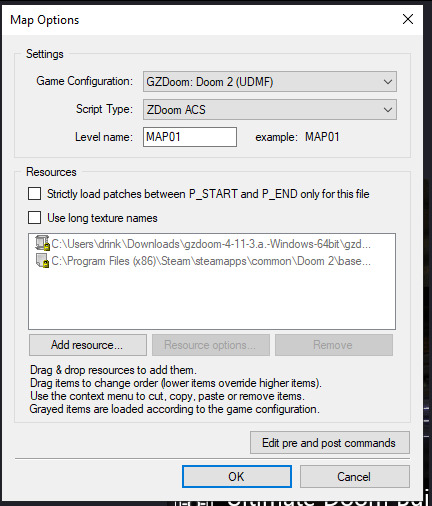
If you click "Add resource" here, you can then select your custom wad and use any assets, code etc. in your map!
How Slade works
This bit is a bit more complex because it deals with multiple file formats and methods of importing stuff, but I'll start simply by explaining textures, flats, sprites and patches.
Before I do that though, I need to talk about Markers. To define images as a sprite, patch or flat, you need to put them between a pair of Markers with specific names, which you can create by clicking the "New Entry" button:

"Empty (Marker)" is selected by default, so all you need to do is name it. The naming format is [LETTER]_START to start a section and [LETTER]_END to end one; S_Start/S_End are for sprites, P_Start/P_End are for patches, and F_Start and F_End are for flats. You can, additionally, further subdivide this by making another pair of Markers inside a Start/End pair with a number after the letter, but I'm not sure if this does anything (my only experience with it is that the Doom 2 wad file does this).
Now to explain how these things actually work! First, sprites. A sprite is an image that represents an object or creature in the game, and a cool thing that GZDoom does is let you use generic PNGs instead of Doom's proprietary GFX format. Sprites use the following naming scheme: a four-letter identifier, a single character denoting what frame of the animation the image represents (the Arch-Vile, which has the most sprites out of any monster in Doom 2, has frames that go from A all the way to Z, and then [, \ and ]), and finally a number from 0-8 that indicates the angle the Thing (that's the technical term for a Doom Engine entity, by the way) is at. Using the Imp as an example:

The "0" angle just means that the sprite should look the same regardless of the player's angle; this is used for items, decorations, the death animations of all monsters (including players), and the two sprites used for Doom II's final boss.
A cool thing about sprite angles is that you can actually make a sprite work for multiple angles; by adding an extra frame-letter and angle-number after the first set, you can do things like have a monster whose left and right walking frames are the same but mirrored by formatting the sprite's name as something like NAMEA2A8 (in fact, the Imp uses this technique for all its sprites apart from its death animation).
Next up, flats! Flats are square textures that are designed to go on floors or ceilings (though you can use them anywhere, including as sky textures!) but lack the flexibility of patch-based textures. You literally just. Import your texture and put it between F_Start and F_End. That's it. That's how a flat works.
And finally, patches. Patches are complicated, but very easy to use when you know what you're doing. First, put your image between P_Start and P_End, then right click it, put your mouse over the "Graphics" dropdown, and select "Add to Patch Table". You will then be prompted to create a TEXTURES lump; click "Ok" with the default settings. This creates a Texture1 lump, and the "Patch Table" (which is just a list of patches, which I will explain soon), alongside P_Start and P_End if they aren't already present (and a dummy texture). Double-click Texture1 to open it, and then select "New Texture" (you can adjust the scale, too):

Once this is done, go to the top-right corner and click "Add patch":

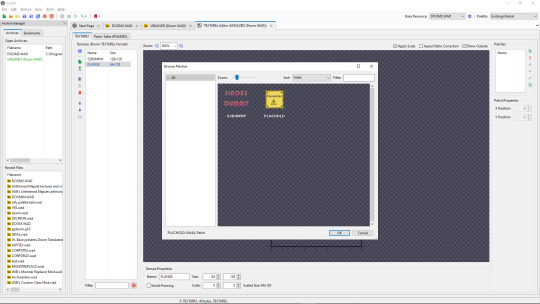
By default, you only have access to any patches you have assigned, but a cool trick I use in my own mapsets whenever I want to modify an official texture is to copy its Texture1 entry from the Doom 2 WAD, then paste it into my WAD's Texture1 and rename it. This does create copies of the constituent patches in your own wad's P_Start/P_End section, but you can delete those and it will still work fine.
Both patches and Flats are limited to 8-letter names, so be warned.
The actual final thing to talk about is converting PNGs to GFX; this is a simple process, but it can cause issues with colour. Basically, Doom has a very specific palette:

While this can look pretty good, on images it wasn't designed for or that use colours it doesn't feature, it can look pretty bad. For example, if I put this random image I made through the conversion process:

Then it comes out looking like this:

All the more cyan-adjacent hues become more blue, it nuked the antialiasing, and some of the gaps in my colouring are now much more obvious (especially on the fifth character's head and legs).
My point is, only do this if you want your mod to be compatible with more vanilla sourceports, or if you want to reduce the filesize. Otherwise, you're better off just using a strict palette when making the sprites and keeping them as PNGs.
Custom palettes are possible, but like. Literally all you do is click "New Entry", select "palette", name it, click the "Import from" button (purple page with a diagonal arrow on the top-middle of the palette-view window), set the filetype on the file explorer to "PNG", and import your custom palette image (which should be square (non-square images get squished and lose some colours) and 16x16 at the smallest, though the images I normally use are 128x128 because for some reason they're scaled up by a factor of 8, even though they display the same when imported regardless of size). You can even test them out or add them to the in-built palette list, which is nice. If you want it to override the default palette when your WAD is loaded, name the lump "PLAYPAL", which is what Doom's palette is called.
Now we get to talk about text lumps! I don't have much to say. Do the "New Entry" thing, select "Text", and name the file. The ZDoom wiki - which I will be linking to at the end - has information on each type, so check those out.
Map making
This is the final main section of this, and I'll try keeping it fairly brief and simple. Doom maps use four main elements; Vertices, Lines, Sectors, and Things. A Vertex is, well a vertex; it's a point in 2D space that acts as a starting or connecting point on a Line. Lines can be either walls or walkover triggers, depending on how you use them. Sectors can be rooms or shapes on the floor, and have properties such as damaging floors, being "underwater" (the player can swim and sound is muffled), or even having different gravity. Finally, a Thing is any entity that isn't one of those, ranging from monsters to player-starts to decorations, plus some complex technical ones I can't even begin to explain.
Useful resources
I am not good with words, but these places are!
ZDoom wiki - covers both regular ZDoom and GZDoom, plus other sourceports like the multiplayer-focused Skulltag and Zandronum. It has guides about ACS and ZScript, two of GZDoom's most useful tools for scripting maps and Things, respectively, as well as the obsolete "DECORATE" language which ZScript incorporates many elements of.
Dragonfly's Doomworks - mapping tutorial resource. I use their portal tutorial a lot whenever I want to put portals in a map.
Doomwiki - good for looking up monster and weapon stats for if you're making custom Things.
23 notes
·
View notes
Text
Palladium Books: Are Palladium’s rules cumbersome and how do you fix them?
Is your game getting bogged down by complex rules? 🧩 In our latest video, we dive into the Palladium Books mechanics that many players find overly cumbersome. Discover why these rules might be slowing down your gameplay and how to navigate them effectively. Don't miss out on this essential discussion! #PalladiumBooks #TabletopRPG #RPGMechanics #TTRPG #RPGCommunity
After the Bomb Heroes Unlimited 2E Rifts Ultimate Edition This video dives into the rules and mechanics of Palladium Books that many players find overly cumbersome and challenging to navigate. Are you ready to unravel the complexities and discover why some of these rules are slowing down your game? Watch now! In the vast world of tabletop RPGs, Palladium Books has always been known for its…
#legion of myth#palladium books complexity#palladium books discussion#palladium books game mechanics#palladium books gameplay#palladium books guide#palladium books review#palladium books rules#palladium books system#palladium rpg mechanics#palladium rpg review#role-playing game mechanics#rpg community#rpg die gest#rpg game mechanics#rpg game systems#rpg mechanics overview#rpg rules breakdown#rpg rules explanation#rpg system analysis#tabletop rpg mechanics#tabletop rpg rules#ttrpg analysis#ttrpg game design#ttrpg rules
0 notes
Text
Daily RPG Readings
Eureka: Investigative Urban Fantasy, Part 2
Alright, for day two we'll be going over pages 28-39, ending at the heading "Role of the Narrator." This is less than what I wanted to cover each day, but I think its warranted for this section because the next 11 pages are extremely dense, and I have a lot to say about them.
We start off strong, with "Rolls, Investigation, & the Eureka! System." First there's a quick definition of what separates an investigation roll from a non-investigation roll, which is crucial because only investigation rolls grant investigation points and thus contribute to earning a Eureka! (the player resource, not to be confused with the game system itself). I feel this distinction warrants its own section in my overview, as earning Eureka! Points and gathering information is so crucial to the system functioning properly. This distinction could probably stand to be bolded with the next few paragraphs, in my opinion.
Without having seen it in play, I'm cautiously optimistic having investigation rolls be distinct from non-investigation rolls and linking the core momentum mechanic to only investigation rolls. I can see the logic in it - the game wants to be about mystery solving and gathering information, so it rewards that kind of gameplay more heavily. On the other hand, there is a slight risk of action-heavy sequences starving PCs of resources and throwing off the pacing of a longer game. I think it will work out, but I'm very interested to see how it actually works at the table.
Next, a conveniently bolded section covers the core gameplay loop of Eureka, and is noted to be extremely vital for all players to understand. To summarize: the Narrator (GM) describes a location in detail along with any points of interest, investigators see major details without needing to roll (but may need to poke around to find hidden details), and investigation rolls are made about specific clues or points-of-interest when the PCs interact with them in a meaningful way.
That's a reductive description, but I have more to say about it than I really want to outline here (seriously I could write essays about perception and information management in RPGs). I'll stick to the basics: I really, really like that PCs explicitly don't need to roll to notice obvious information. I'm hooting and hollering that we explicitly don't need rolls to get obvious or basic information about specific points of interest. I'm jumping out of my chair and yelling the name of my favorite sports team about the game pointing out that multiple different skills may be used to learn different things about a given point of interest, depending on interpretation.
Anyway this philosophy of information reminds me of GUMSHOE except more explicit about putting the things I like into rules text. I would perhaps like a note that red herrings should be sparing, because players rarely need help coming to wild conclusions based on spotty evidence, but this is a matter of opinion.
Now we learn about the results of an investigation roll at each degree of success, including how many investigation points (abbreviated IP going forward for brevity) are earned towards a Eureka! Point. A Full Success gets a lot of information and 1 IP. A Partial Success grants less information (or a consequence) and 2 IP. A Failure grants no information, but does give a generous 3 IP. We are also told to write down Failures on the character sheet for future use. Once an investigator gains 15 IP, they gain a Eureka! Point, the Eureka systems main reward for PCs and a potent resource. Eureka! Points can be spent to gain information from a previously failed investigation roll OR they can contribute extra odds of success to a non-investigation roll.
I always think granting resources for roll failure is a good idea, because it encourages players to think of 'bad' rolls as potentially exciting paths for the narrative to take rather than as 'losing the game' Since Eureka! Points are such a potent resource, it gives players something to look forward to no matter what the outcome of a roll is. I also love the incorporation of the mystery trope where a previously mysterious clue turns out to be a key piece of information later, once the characters put it into its appropriate context or think about it more deeply. Also, writing down Failed rolls encourages players to dip their toes into note taking and gets them into the habit of ruminating over previously acquired information, which is great for a mystery game.
I think Character moments granting IP and Eureka! adding odds of success to a non-investigation roll are great utilities too, but this section is getting away from me so I'm going to leave it there for now.
Lastly, we have an Example of Play for investigation, which is always an extremely helpful tool for players to be able to see the rules in action. In the scenario, two 1930s detectives are following the trail of a gang of bank robbers and have found one of the suspect's place of employment. We start off with a failed Charm roll that grants 3 IP, demonstrating that Interpersonal skills can be used for investigation just like any other, as long as its in the service of gaining information. The Narrator describes the immediate area, and one of the PCs notes a lack of points of interest (footprints) without needing to roll. The Narrator does not highlight this until the player asks about it, which encourages players to be smart, ask questions, and poke around.
Without giving a play-by-play, we get more investigation rolls demonstrating the various degrees of success for investigation rolls and how they move the narrative along. A Eureka! Point turns the first failed Charm roll into a success, resulting in a climactic moment where hidden compartment underneath a desk is revealed. The PC pushes the desk aside, and there is a note here that even if someone might have difficulty moving this desk in the real world, it is an inappropriate time to call for a roll because failure does not have stakes and would not be interesting (I'm hooting, hollering). Finally, the scene culminates in the beginning of combat as one of the NPCs attempts to stop the investigators in their tracks!
I think the example of play given serves its utility well and shows off the strengths of the sytems. No notes (yet, I might refer back to this later).
34 notes
·
View notes
Note
Hello! My play group has recently begun a PF2e game and we're enjoying it, but as an almost-forever-GM running one-shots looking for The Next Big Game to run I'm definitely noticing a trend of "a small run of bad rolls has decided you lose" that stands in contrast to a more subjectively "forgiving" system like Cypher or Quest. I know any dice-based game can theoretically end up with the dice deciding "you lose tonight," but it got me to thinking about that feeling in trying new systems. We definitely love mechanics in play - i.e. I'm not strictly looking for diceless systems, but they're not off the table either - so I'd love to hear about games you like and think are on the forgiving side of the spectrum with regards to bad luck streaks. Thank you!
THEME: “Forgiving” Games.
Hello friend, I love these kinds of games a lot. Here's a few outside of Numenera, which you already seem to know about. I tried to stick with games that have some longevity, although I'm not sure how long you can play Our Haunt as a campaign.
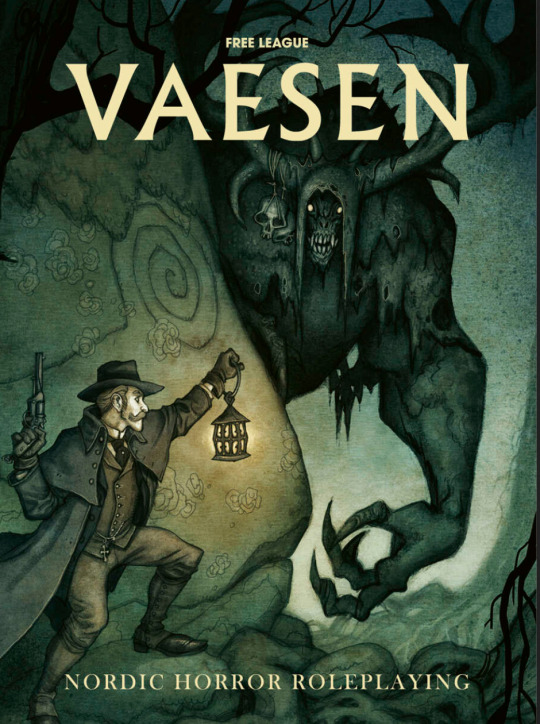

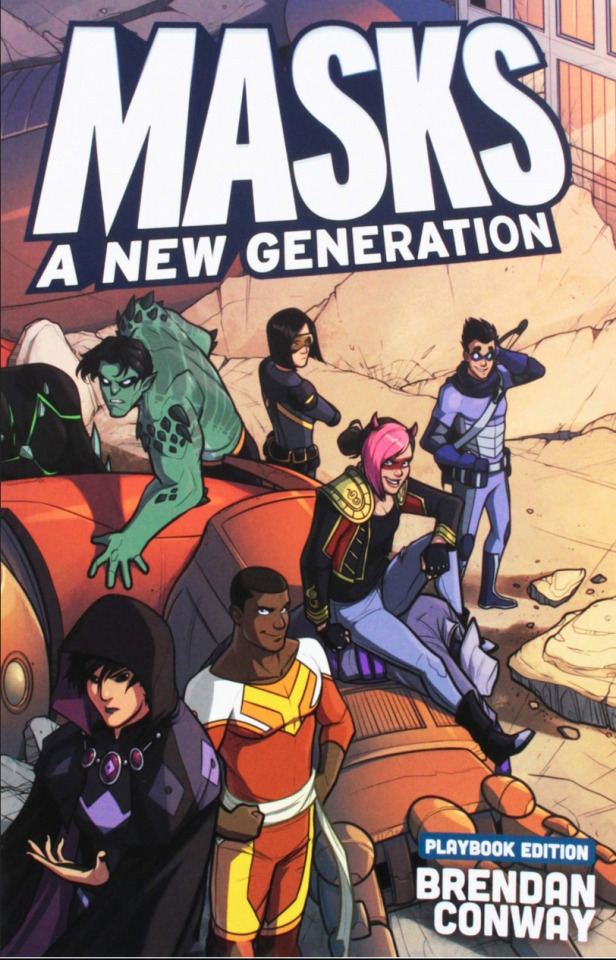

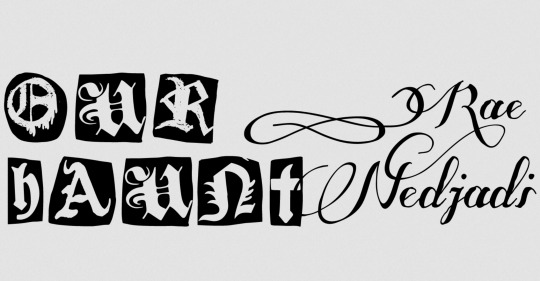
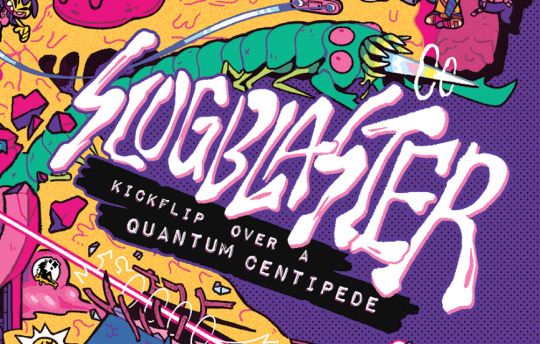
Vaesen, by Free League Publishing.
Welcome to the Mythic North – northern Europe of the nineteenth century, but not as we know it today. A land where the myths are real. A cold reach covered by vast forests, its few cities lonely beacons of industry and enlightenment – a new civilization dawning. But in the countryside, the old ways still hold sway. There, people know what lurks in the dark. They know to fear it.
Vaesen – Nordic Horror Roleplaying is written by Nils Hintze and based on the work of Swedish illustrator and author Johan Egerkrans. Vaesen presents a dark Gothic setting steeped in Nordic folklore and the old myths of Scandinavia. The game mechanics utilize an adapted version of the award-winning Year Zero Engine.
Vaesen allows players to do something called pushing the roll, although you can only do it once per any given action. You will roll a number of six-sided dice according to a skill + attribute combination, and aim to roll 6’s, which are successes. Pushing the roll allows you to re-roll any dice that did not come up as a 6, thus giving you a second chance - or a chance to be more effective, if you need more than one 6 to do what you want to do.
Since Vaesen is a horror game, however, this push doesn’t come without a cost. Choosing to Push a roll means that your character will have to take on a condition, which is represented as either a Physical or Mental injury or affliction. Take too many in the same category, and your character becomes Broken, thus requiring immediate medical attention. Conditions can be healed and cured, so how deadly your game is depends on how little (or much) rest time your characters have in between encounters.
Genesys, by Edge Studio.
Face down a dragon as a brave knight, hack into a corporate security system as an elite runner, set sail in your airship. Unlimited adventure awaits you in Genesys, a new roleplaying system designed for a variety of settings and limited only by your imagination.
The Genesys experience begins with the Genesys Core Rulebook, which features an explanation of the innovative narrative dice system and core mechanics of the game, an overview of five different settings in which to place campaigns, and advice for Game Masters to craft a myriad of adventures with unparalleled freedom.
So I’d really like to recommend the Star Wars RPG that spearheaded this system, but as far as I understand it’s getting harder and harder to get a hold of. The core system, however, is still available on DriveThruRPG, and I really like how it handles dice rolls. The Genesys system uses a custom set of dice that have three different levels of results: advantage/threat, success/failure, and triumph/despair. These symbols typically cancel each-other out. Both positive and negative dice have a number of different symbols on their faces, and rolling more successes for example, means you’re not going to have less advantages, while rolling a higher number of threats will lead to less failures.
This means that the two most common rolls you will get will be Success with a Threat and Failure with an Advantage. Therefore each roll has both a positive and negative result. If you end up rolling extra-special dice, you might end up with a Triumph and/or a Despair, which happen regardless of any other rolls. So you could have a Failure with an Advantage and a Triumph - which might mean that maybe you don’t unlock that door, but maybe you hear someone coming and duck into a hidey-hole before they show up - and they turn out to be an ally.
Genesys is a toolkit that you can use to make your own game, but if you want a setting to go with it, you might want to check out Realms of Terrinoth (Fantasy), Keyforge: Secrets of the Crucible (gonzo sci-fantasy), or Shadow of the Beanstalk (cyberpunk).
Masks: A New Generation, by Magpie Games.
Halcyon City has had more than its fair share of superheroes, superteams, supervillains, and everything in between. Your team of young supers must forge your own path amidst the pressures of a world full of people telling you what to do and who to be, and kick some butt along the way!
Masks: A New Generation is a superhero tabletop roleplaying game full of action, youthful angst, and dazzling bravery. Take on the roles of members of the latest generation of superheroes, young adults trying to figure out who they are and what kind of heroes they want to be.
MASKS is well-known and for a good reason. It’s an excellent introduction to the PbtA framework, and contains a lot of solid advice for the person who’s running the game. One of the core pieces of advice that you can take from this game to others in the same system-family is that of Soft and Hard moves. When a PC rolls a 6 or less, the ball is in your court, but as the GM, it’s up to you how bad the character fails. Soft and Hard moves are a key part of this.
While a straight-up failure may be needed once in a while, sometimes all you need to do is telegraph danger, and give your players another chance to try a different approach. This is called a Soft Move. You might place the characters in an eerie atmosphere but give them a chance to act, or present them with an NPC asking difficult questions, but give them space to answer. You might not even require them to roll at all - if you think that the hero should be able to do something, they’ll do it.
Finally, since Masks is about teenage superheroes, death isn’t really on the table. What’s at stake is their self-image, and that is reflected in the emotional damage the characters take. This chance to wrestle with why they truly are might even be something welcome for the players to dig into - I know me and my friends sometimes found moments of interpersonal conflict to be the most rewarding.
Endeavour, by Armiger Games.
You are an officer aboard the Interstellar Confederation Ship Endeavour. Your mission is to explore the galaxy. You will travel deep into uncharted space where you will encounter strange phenomena, make first contact with alien civilizations, and help those in need.
This is an optimistic-science fiction game. It is a game about a future in which humanity has progressed beyond the kinds of internecine conflicts that plague modern society. Advanced technology is common and has created a post-scarcity society throughout the Interstellar Confederation.
Stories in Endeavour generally involve some kind of moral quandary. Moreover, the futuristic setting acts as lens through which we can view contemporary social issues. The best such stories are fundamentally about the difficult choices the crew are asked to make and how they are affected by their experiences.
Endeavour is a play-set for AGON, a game about Greek Heroes setting out to make a name for themselves. You need AGON to play, but the rules for both these games take a very unique approach to solving problems.
Almost every conflict present in Endeavour is a collaborative Challenge. This means that any time an obstacle presents itself, the group has a chance to face it as a team. Facing Challenges as a team increases chances of success in two ways: in one way, since each player might be participating, there is a higher chance that one person or another rolls a high enough number to pass the challenge. However, players can also choose to aid each-other, foregoing a chance to gain Distinction but improving another player’s chance at success.
Our Haunt, by Rae Nedjadi.
We are ghosts. We are in a house we don't recognize. We have a handful of memories, and these memories are brief moments and flashes of barely something. The Living are nearby, and they encroach on our space, making their demands. Worse, there is a Thing in the Walls. It is ancient, inhuman. Hungry, yearning. Angry.
But this is Our Haunt now. This is our home, and we only have each other as family. If we take care of each other, good things will happen. We just know it.
Our Haunt uses a diceless system called Belonging Outside Belonging, or No Dice, No Masters. This can be GM-less, but it doesn’t have to be - and I definitely recommend checking other games that use this system if you want to control the level of failure.
BoB games use a token-based economy, where following certain prompts on your character sheet will give your character the ability to use other abilities listed on their character sheet. This creates a rhythm, between moves that invite interesting interactions or complications, and moves that push the story forward, or allow you to do something special.
Each playbook usually also has special moves that the character can do for free, that neither earn nor spend a token. Because the use of tokens is up to the players, failure will only happen when you decide it happens, and every failure banks a potential success, so even if Our Haunt isn’t what you’re looking for tone-wise, I definitely recommend checking out other Belonging outside Belonging games.
Slugblaster, by Wilkie’s Candy Lab.
In the small town of Hillview, teenage hoverboarders sneak into other dimensions to explore, film tricks, go viral, and get away from the problems at home. It’s dangerous. It’s stupid. It’s got parent groups in a panic. And it’s the coolest thing ever.
This is Slugblaster. A table-top rpg about teenagehood, giant bugs, circuit-bent rayguns, and trying to be cool.
Forged in the Dark games allow you to succeed at least partially on a result of a 4 or higher, so you’re much more likely to succeed with a cost than straight up fail, and even if you do take some kind of consequence, that consequence can always be thrown off by using something called a Resistance Roll. The original system, Blades in the Dark, still felt pretty brutal if you played it as written. However, Mikey Hamm, the designer for Slugblaster, wanted to make a game about teenagers hoverboarding across dimensions, not hardened criminals surviving in a brutal city, so he made some key changes.
Kids in Slugblaster may take “slams”, but no damage is permanent. Staying in another dimension too long may trigger an unpleasant experience called peelback, but it doesn’t kill you, and if you log a bunch of doom (the game’s Stress equivalent), you don’t take a permanent condition - you worry your folks, or have to spend your extra free time doing homework. At its core, Slugblaster’s biggest threat is losing your status - you’re not really in physical danger.
Other Games to Check Out
Wanderhome, by Jay Dragon.
Spectaculars, by Scratchpad Publishing.
53 notes
·
View notes
Text
#SakuraSpiderArachnid #MarvelGames #Playstation7 #DearDearestBrands
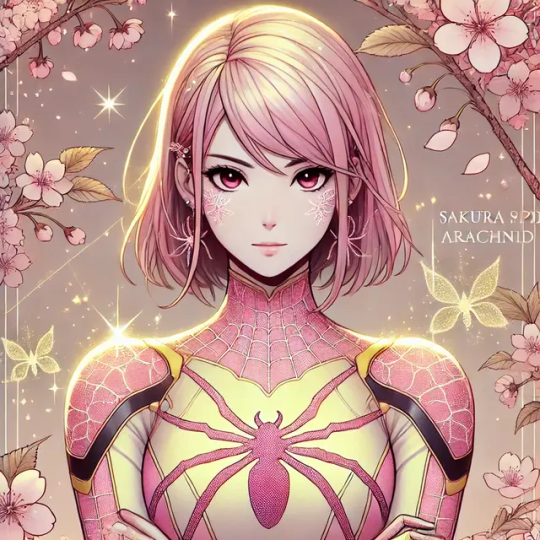


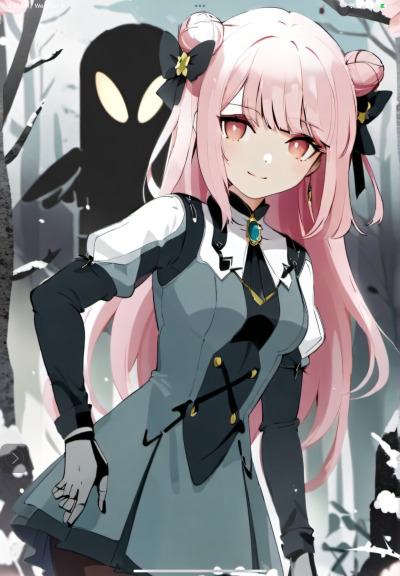



Here's an overview for Sakura Spider: Arachnid, a PlayStation 7 game concept in collaboration with Marvel Comics and DearDearestBrands:
Game Concept: Sakura Spider: Arachnid
Platform: PlayStation 7
Genre: Action-Adventure, Open-World, RPG
Graphics Style: Manga-inspired, cel-shaded visuals with anime-like fluidity and dynamic aesthetic environments.
Story and Setting
Origin Story: The protagonist, Sakura Hoshino, is a kind-hearted artist living in Tokyo, struggling to balance her creative dreams with societal expectations. While sketching under a blooming Sakura tree, a spider—mutated by gamma radiation—bites her. This spider was created by an experimental cross between Oscorp and a mysterious gamma reactor stationed near the ancient cherry blossom grove.
She discovers new powers that reflect her artistic soul and emotional depth. Empowered with heightened empathy and a "sense of aesthetics," Sakura fights to protect her city from threats that challenge both its physical and cultural identity.
Setting: The game takes place in Neo-Tokyo, a sprawling city divided into diverse zones, including:
Shinjuku Skyline: Neon-filled high-rises with bustling nightlife.
Harajuku Haven: Fashion streets where creativity thrives.
Ancient Cherry Grove: Mystical Sakura trees, where her powers were born.
Tokyo Bay Industrial: A hub of Oscorp gamma experiments and toxic waste.
Gamma Underbelly: Secret Oscorp labs housing mutated creatures.
Cultural Market Streets: Places to gather inspiration and interact with NPCs.
Gameplay
Core Gameplay Mechanics:
Web Weaving: Manipulate webs to craft weapons, art-based traps, and shield barriers.
Aesthetic Aura: Use the protagonist’s power of "Aesthetic Empathy" to influence NPCs, calm enemies, and rebuild damaged zones.
Emotion Threads: Unlock emotional-based superpowers like "Gamma Kindness" (healing) and "Empathy Strike" (disabling enemies).
Sense of Design: Use her artistic abilities to restore monuments, graffiti walls, or design costumes with bonuses.
Combat System:
Manga-styled action sequences with combos tied to her "Spider Dance," a fusion of web attacks and Sakura petal-themed strikes.
Dual attack modes:
Stealth Mode: Silent takedowns using web camouflages.
Empathy Combat: Disarm and pacify enemies with emotional insight.
Exploration and City-Building: Restore zones by infusing aesthetics into Neo-Tokyo, converting drab areas into thriving artistic hubs. Gain resources to improve the city’s visual beauty and morale.
Supporting Cast
Takashi Hoshino (Brother): A robotics prodigy who creates her gadgets.
Rika (Best Friend): A spirited fashion designer who helps craft outfits for stealth and combat.
Dr. Masako Arai: A former Oscorp scientist turned mentor who knows the truth about the experiments.
Gamma Mutant Villains:
The Sakura Swarm: A gang of mutant spiders spreading chaos.
Crimson Bloom: A rival powered by corrupted Sakura energy.
The Oscorp Shadow: An advanced AI controlling the gamma experiments.
Items and Utilities
Sakura Thread Enhancer: Boosts web strength.
Petal Shield: Blocks attacks while dazzling enemies.
Web Artistry Kit: Allows you to paint zones, creating buffs and influencing allies.
Kindness Vial: A rare item that unlocks massive area healing.
Art Style and Aesthetic
Cel-Shaded Graphics: The game embraces soft, manga tones with vivid cherry blossom effects.
Cultural Fusion: Neo-Tokyo blends traditional Japanese architecture with futuristic neon aesthetics.
Dynamic Seasons: The city changes based on Sakura's emotional state (e.g., blossoms flourish when morale is high).
Potential DLC and Expansions
The Gamma Grove: Explore an ancient Sakura forest that reveals the origin of the gamma mutation.
Spider-Verse Crossover: Features other Spider-heroes from the Marvel Universe.
Custom Costume Creator: Design Spider outfits with aesthetic perks.
Let me know how you'd like to expand any specific part of this concept!
https://chatgpt.com/share/6753d965-c084-8005-943f-9bf588ab1a16

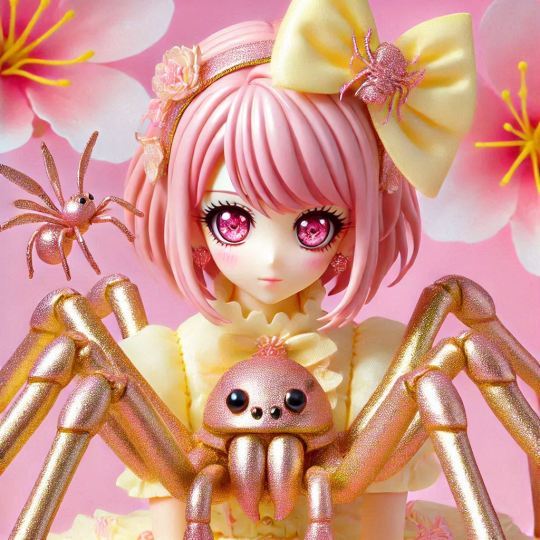

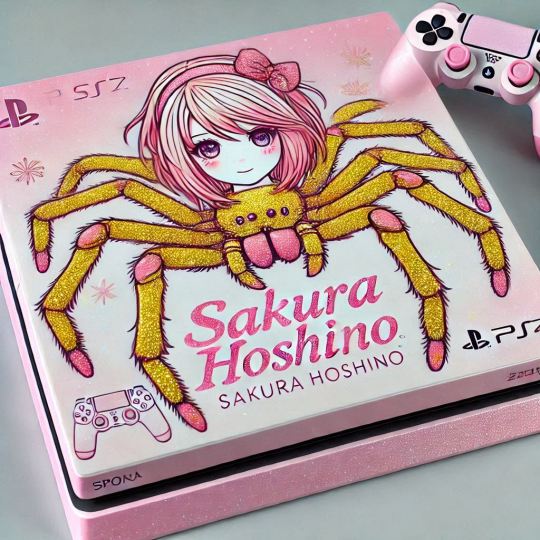


Let's expand on gameplay ideas for Sakura Spider Arachnid! Here’s a detailed breakdown: Core Gameplay Mechanics 1. Swinging System: Fluid, physics-based web-swinging similar to Spider-Man PS5, but with a unique Sakura twist. Players can unlock aerial tricks and advanced web-swinging techniques that leave trails of glowing Sakura petals. Special “Gamma Burst Swing” mechanic allows for high-speed traversal across long distances. 2. Empathy Powers: Instead of relying on brute force, Sakura can resolve conflicts using her Empathy Webs, which calm or convert hostile enemies. Players must strategically decide when to use empathy or combat, altering NPC behavior and story outcomes. 3. Sense of Aesthetics: Sakura can identify weak points in environments or enemies using her aesthetic sense. This ability highlights climbable surfaces, destructible objects, or secret pathways. 4. Combat: Fast-paced, martial-arts-inspired combat blending acrobatics and web abilities. Sakura's “Petal Fury Mode” unleashes rapid attacks surrounded by an aura of glitter and petals. Gamma-powered moves, like the “Blossom Smash”, deliver heavy-hitting crowd control effects. World Design 1. Zones: Shibuya District: Neon-lit streets, bustling crowds, and vertical challenges with towering billboards. Sakura Temple Grounds: A tranquil area with hidden challenges and spiritual puzzles tied to Sakura’s origin. Gamma Research Facility: Heavily guarded industrial zone, featuring stealth-based missions and tech puzzles. Skyline Heights: High-rise corporate buildings for intense web-swinging sequences and rooftop battles. 2. Interactive Elements: Players can interact with Tokyo’s citizens, from helping lost children to stopping random crimes. Sakura can create web-art murals using leftover Sakura petals to inspire kindness in the city. Supporting Cast 1. Yuto Tanaka (Mentor): A scientist who explains the origin of the gamma spider and guides Sakura on using her powers. 2. Hana Kuroki (Best Friend): Provides comic relief and helps design Sakura’s webbing gear. 3. Villains: The Steel Ronin: A cyber-samurai enhanced by gamma technology. Shade Widow: A rival spider-powered character who represents Sakura’s dark potential. Items and Utilities 1. Petal Webbing: Unique webs that can heal allies or immobilize enemies. 2. Aesthetic Vision Goggles: Enhances Sakura’s ability to spot hidden objects or see through illusions. 3. Gamma Infuser: Temporarily boosts Sakura’s abilities during intense battles. Side Quests and Activities 1. Sakura Bloom Restoration: Revive wilted Sakura trees around the city to boost morale. 2. Fashion Challenges: Use Sakura’s sense of aesthetics to help NPCs with design challenges. 3. Street Performances: Sakura can perform aerial stunts for Tokyo’s citizens to earn reputation points. Visual Style and Aesthetic 1. Vibrant, anime-inspired graphics with photorealistic details. 2. Dynamic lighting changes based on Sakura’s emotions, such as a glowing aura during high-stress moments. Let me know if you'd like to focus more on any specific part, such as storyline, mechanics, or visual design!







Here’s a detailed Character Profile for Sakura Hoshino, the heroine of your game:
Character Profile: Sakura Hoshino
Full Name:
Sakura Hoshino
Alias:
Sakura Spider Arachnid
Age:
23 years old
Origin:
Tokyo, Japan
Occupation:
Web-slinger, Protector of Tokyo
Fashion Designer (Side Hobby)
College Graduate (Specializing in Environmental Design and Aesthetics)
Appearance
Height: 5'8"
Build: Athletic, with a lean and toned physique
Hair: Long, flowing pastel pink hair with subtle highlights of soft yellow, often tied in a loose ponytail when active.
Eyes: Deep, vibrant purple with a glimmer of white, reflecting her inner strength and empathy.
Skin: Fair, with a soft glow, showing the effects of gamma radiation exposure.
Suit:
Design: A sleek, high-tech spider suit infused with Sakura blossom patterns. The suit’s base color is pastel pink, accented with a soft yellow hue and glowing threads of white to represent Sakura petals.
Webbing: High-tech, metallic webs that glow with a Sakura petal motif.
Additional Features: The suit features a glowing "Sakura Core" in her chest, symbolizing her connection to the mystical Sakura tree that gave her powers.
Backstory
Sakura Hoshino was an ordinary university student studying environmental design, passionate about nature and art. During a visit to a traditional Japanese shrine, she stumbled upon a sacred Sakura tree rumored to be connected to ancient gamma radiation experiments. While sketching its beauty, she was bitten by a rare spider that had been exposed to this radiation. The bite merged with her body, giving her the ability to manipulate webs with both physical and emotional force. Her deep connection to nature and aesthetic design also enhanced her powers, giving her a unique ability to sense beauty, calm aggression, and heal emotional wounds.
After the incident, Sakura was thrust into a dual life: one as a protector of Tokyo, and the other as a budding fashion designer seeking to express herself and promote kindness. She uses her powers to combat crime and solve conflicts without violence, utilizing empathy and aesthetics as her main weapons. Sakura now fights to protect her city while balancing her personal dreams and responsibilities.
Personality
Compassionate: Sakura’s defining trait is her deep empathy. She can sense the emotions of others and, when necessary, uses her powers to help heal emotional wounds.
Optimistic: Despite the challenges she faces, Sakura believes that beauty and kindness can bring change. She strives to bring peace in a world filled with chaos.
Creative: As an artist at heart, Sakura views the world through an aesthetic lens. She finds beauty even in the darkest of places and uses her creativity to solve problems.
Courageous: Sakura faces dangers head-on, often with a sense of grace. Her bravery isn’t defined by a desire for glory, but by her commitment to protect those she loves.
Determined: Sakura has a strong sense of justice and never backs down from doing what’s right, even if it means making personal sacrifices.
Abilities and Powers
Web-Slinging: Sakura can create webs of varying sizes and strengths, using them to swing between buildings, immobilize enemies, or create structures. Her webs are unique in that they also carry emotional energy, calming or subduing opponents.
Empathy Webbing: Her webs can carry a calming aura, making her opponents feel peace or empathy. This ability helps resolve conflicts without violence, but can also be used strategically to weaken enemies.
Aesthetic Vision: Sakura has an enhanced sense of aesthetics, allowing her to perceive hidden details in her environment, like weak structural points or hidden pathways. It also helps her find beauty in unexpected places.
Gamma Boost: Occasionally, Sakura’s connection to the gamma radiation grants her temporary boosts in power, enhancing her physical strength, agility, and the reach of her webs.
Healing Touch: Through her deep empathy, Sakura can heal minor emotional or physical wounds in herself or others. This ability also allows her to calm her allies in intense situations, restoring their morale.
Sakura Blossom Fury: A powerful, high-speed attack where Sakura releases a flurry of webs imbued with Sakura petals, overwhelming opponents with both speed and beauty.
Strengths
Diplomatic: Sakura prefers to solve problems peacefully, using her powers to mediate conflict rather than engage in violence.
Adaptable: Her aesthetic sense allows her to think on her feet and adapt to any situation creatively.
Agile and Fast: Her physical training and spider abilities make her incredibly nimble, able to navigate the city’s skyline with grace and precision.
Weaknesses
Emotional Vulnerability: While her empathy is her greatest strength, it also makes her susceptible to emotional exhaustion. Overuse of her empathy can leave her drained.
Gamma Exposure: Extended exposure to gamma radiation may occasionally cause her to lose control of her powers, leading to instability in her emotional balance.
Over-reliance on Non-Violence: Sakura’s preference for peaceful resolutions can sometimes put her in dangerous situations where more forceful methods may be needed.
Relationships
Yuto Tanaka (Mentor): A scientist who understands the origins of the gamma radiation and guides Sakura in controlling her powers. He is a father figure and the one who encouraged her to embrace her new abilities.
Hana Kuroki (Best Friend): Sakura’s best friend and confidante. Hana supports her throughout her journey, both in her heroic duties and personal life.
Villains:
The Steel Ronin: A dark counterpart to Sakura, a cyber-enhanced warrior who is bent on destroying the harmony Sakura seeks to protect.
Shade Widow: A mysterious figure whose own emotional turmoil mirrors Sakura’s, leading to a rivalry built on both their powers and inner conflicts.
Catchphrase:
"Beauty is the strength we need to protect the world."
War Of The Roses!!!
#playstation7#deardearestbrands#ps7#digitalconsole#Sakura Spider arachnid#marvelGames#DearDearestBrands
5 notes
·
View notes
Text
Week 2
Overview and thoughts
I decided I want to try to make one post a week with progress on my project, so I figured I should be more transparent on what these posts should look like and some more insight into what I am working towards.
Each post should be up on Monday to highlight what I been working on for this system/game. I intended to release a playtest of the system that will be open to the public. I currently have only myself on the project so progress will be slow but once I have some sort of Alpha test or something I'm comfortable having people run with I'll post a link to a pdf and host it in a pinned post. I know that this will require a lot and my goal is to have a simple adventure module to test out along with some handfuls of additional monsters to play with if you don't want a module. This is ambitious but I need to shoot for the moon
Beginning on the System - TTRPG stuff to be used for my game
I mentioned briefly in last week's post that I wanted to do a point buy based system and I figured I should go into some depth about what I currently have so far.
I like the idea of loosely placing abilities/features into one of three categories based on traditional MMO style features: Tank, Damage, and Support (I am going to change these names, they are not final). I also want some semblance of balance, so trees or pathways make sense, invest more into something and it gets better. I also want things to overlap so it's more a Venn Diagram and less a defined category. I was also thinking to split based on archetypes but that would be limiting I think. I would want my favorite archetypes to work (spell sword, life as a resource) along with other traditional (fighter, ranger) and non traditional styles (using magical objects rather than magic itself, specific weapon oriented builds).
I also think the point buy idea should help with encounter balance since encounters of specified difficulties will be using a specific amount of points and a Game Master can make encounters based on those points (kinda like armies in war games like Warhammer)
The fear here is that the point buy system will lead a player down a rabbit hole of poor build optimization or choice paralysis. I feel poor build optimization can be solved with allowing players to rebuild their character somewhat with a narrative beat (or in game mechanic for when I bring it over to the rpg but a system like that is common across RPGs so it's not a design flaw imo). The choice paralysis is. I think I need to guide players to cool endcap abilities or features along with features that require investing in multiple areas, like let's say applying poisons in combat without taking up turn resources is an investment in some kind of rogue aligned tree and an alchemy based tree. I think I am finding both Pathfinder and Fallout: New Vegas as inspiration for Horizontal Progression.
Now onto what I have so far for Character Creation. I think I am going to be giving the player about 50 total points they can use for creating a character but are required to use 20 for statistics (I am going to be running with D&D/Pathfinder stats) and 10 for Saving Throws as a minimum. I think players should be able to spend more on these if they would like but it would limit how much depth they get at level one. A player's "Heritage" will either cost points, give points, or be point neutral since if one Heritage gives more benefits or Horizontal potential I think it should cost a player and if a Heritage is very flavorful but punishing, the player should be able to try to use their points to help circumvent these issues or play into their strengths.
My issue I see with this could lead into ridiculous brews since how wide the system is. But that also might not be an actual issue. I need to nail down my specific demographic since this is an indie project and won't have wide appeal, I should find a niche and stick to it rather than trying to take on the juggernauts.
Some notes about my research into non-western piracy
I have begun my initial dive into non Caribbean Piracy and I have found some areas of interest I need to dig into, like the Chen Zuyi, a pirate from the 1400 to 1407 and the Wokou. Forgive me for spelling anything wrong as I am so far working off of Wikipedia as a help to find some primary sources.
Chen Zuyi seems like a very interesting character with little info in the West (unsurprisingly). He seemed to rule over Palembang which I happen to know where that is due to EU4 and my love for naval/trade gameplay as I have played the nation of Palembang and I knew they had an event to reform into a pirate republic. So it's really cool to actually learn a bit about this. I need to find some more primary sources about this man but it seems a bit hard with how little there is in English.
The Wokou were pirates who raided Korea and China from the 13th century to 17th. Again similar to Palembang, in EU4 you can play the Daimyo of So on Tsushima and reform into a Pirate Republic with an event referencing the Wokou, so I knew there was something in this region but that was it going into my initial research. Wikipedia has alot more info on this group but it seems to a bit controversial to claim that The Wokou are all Japanese, when there is evidence to point that the early Wokou were from several different ethnic groups where people whole lived on the fringes of society. Which makes me want to draw parallels to pirates during the golden age of piracy but I need to do more research.
Recommended Reading for this week
I noticed that the whole book Elusive Pirates, Pervasive Smugglers: Violence and Clandestine Trades in the Greater China Seas show up during my reading about the Wokou so I am going to try to read that this week off of some kinda of online library or archive (or get it from my local library's inter library loan)
Previous Post
#game dev blog#ttrpg#indie ttrpg#pirate ttrpg#pirates#game dev update#indie dev#game development#video games#Anyone have any suggestions to make my posts more appealing? They seem kinda blocky to be honest#I promise to move onto some game dev stuff at somepoint this week - I downloaded unity and that will be on the post for next week hint hint#speaking of unity - anyone got some good unity tutorials? I plan on using the inbuilt ones#ttrpg design#ttrpg dev
4 notes
·
View notes